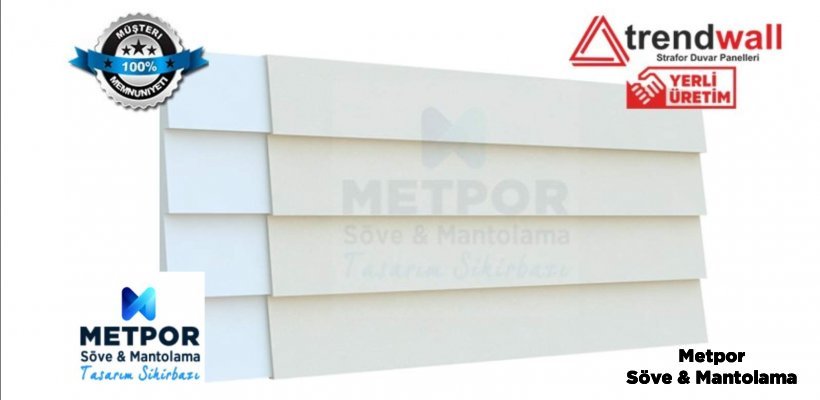Types of Thermal Insulation Materials
- Materials designed from mineral products (mineral wool, porous glass, vermiculite, perlite, etc.)
- Animal or plant materials (motoneous wool, duck down, linen, cotton wool, coconut, cellulose filler, straw, cork, wood fibres, hemp or cellulose ...)
- Synthetic insulation (polystyrene, polyurethane, PVC ...)
- Do not be too insulating so that heat can enter the material.
- Have a good capacity to accumulate heat.
- Have high density to store heat in minimum thickness.
In building facade designs, it has become much more important that it appeals to the eye rather than obtaining a standard appearance. For this purpose, detailed exterior cladding studies are carried out. However, the types and prices of these practical exterior cladding materials vary.
The siding-printed exterior claddings manufactured using natural sheathing materials or the fuga siding models provide an aesthetic appearance to the exterior with their wooden texture " Exterior paint " can be applied on it, it is resistant to moisture, does not swell and spill, has long-term durability, is resistant to heat and fire, can be easily applied to all kinds of buildings.
The reason for this is that the buildings are constructed in different types, the special requests of the individuals, and the preferred thermal insulation materials are of different qualities. There are exterior cladding materials such as stone cladding , parquet profile, wooden wall cladding , and detailed jamb cladding . Generally, it is extremely important to have integrity in site structures. For this reason, what needs to be done is to make the same exterior applications in all buildings and the quality of each of them is the same.
Various exterior cladding materials and construction companies or private siding companies create design wonders . Metpor exterior cladding materials , such as siding printing , fuga liner, terracotta cladding and wood-patterned exterior cladding, not only add visuality to buildings, but also carry a high degree of sheathing , that is, insulation .
Some Thermal Insulation Materials and Types Produced in Turkey
Glasswool : ( TS 901 – EN13162 )
Rockwool : ( TS 901 – EN13162 )
Expanded Polystyrene (EPS) : ( TS7316 – EN13163 )
Extruded Polystyrene (XPS) : ( TS11989 – EN13164 )
Polyurethane Foam (PUR) : ( TS
Glass EN 13165 ) Foam : ( TS EN 13167 )
Phenol Foam : ( TS 2193 - EN 13166 )
Polyethylene Foam : ( TS 418 - EN 12201 )
Cork Boards : ( TS 304 )
Wood Fiber Boards : ( TS 304 )
Wood Wool Boards : ( TS EN 13171 )
Expanded Perlite (EPB) : ( TS EN 13169 )
Expanded Cork (ICB) : ( TS EN 13170 )
The main building curtain wall systems are facade panel, unit, classical, structural putty and structural sealing. They are materials that protect the effects coming directly from the outside of the building, that is, from the atmosphere, from the wall core of the building. The main function of siding in buildings; to provide thermal insulation and aesthetically, to provide a decorative feature in terms of architectural appearance. Exterior cladding is an " application " technique that provides " insulation " by reducing sound and heat transfer . You can reach our article about Exterior Cladding Images from the link.
Some Imported Thermal Insulation Materials
Ceramic Wool
Melamine Foam
Poly Isocyanate Foam
PVC Foam
Vermiculite
Elastomeric Rubber Foam
Knauf Vidipan
Aqua Panel Mesh Cement Based Insulation Materials





Metpor
info@metpordekor.com
Okunma Sayısı : 162